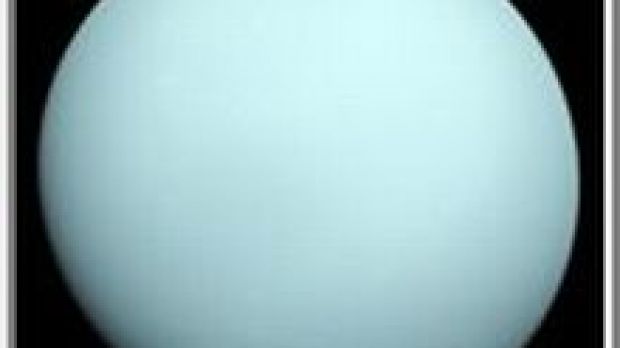Hubble telescope keeps on surprising the astronomers: one of its latest finds is a new pair of rings and two more moons orbiting around Uranus. Even more surprisingly is that the already known rings appear to have changed since 10 years ago, suggesting that Uranus' system of moons and rings is highly chaotic.
Uranus is the seventh planet from the Sun, the next after Saturn. It is a gas giant, the third in size in the solar system after Jupiter and Saturn. Uranus had been visited by a NASA probe (Voyager 2) only once. Voyager 2 passed near Uranus in 1986.
The greatest weirdness of Uranus is that it has a highly tilted axis, around 90 degrees: it rotates around the Sun like a wheel. Due to this fact, Uranus receives more sunlight on its polar regions than on its equatorial regions. Nevertheless, its equatorial regions are hotter than its poles. Why this happens still remains a mystery, apparently it is due to some internal heat source. It is speculated that Uranus' tilted axis has been caused by a collision with a proto-planet in the early stages of solar system formation. Uranus has some faint rings and the newly discovered rings are the closest to the planet surface. Apart from its main moons, Uranus has numerous other smaller moons, some of them sharing the same orbits with the rings. Generally, the rings around a planet have the tendency of spreading around in a spiral due to centrifugal force - especially the fainter rings. That's why the persisting rings are usually made of the material blasted by meteorites off the surface of some moon. That's why it is not unusual for a ring to have some moon orbiting inside itself. For instance, Amathea around Jupiter, Pan around Saturn, Galatea around Neptune. The material for Uranus' rings is "furnished" by a small moon discovered in 2003, called Mab, which orbits in line with the external rings.
Besides Voyager 2 observations, astronomers also have a series of observations made by Hubble telescope. Two scientists from NASA Research Center, Mark Showalter and his collaborator Jack Lissauer, have synthesized the available observations and they have discovered that Uranus' system of moons and rings has witnessed several changes since 1994. They have suggested that Uranus' system in unstable. Lissauer has computed that Uranus' moons will collide within a few million years, which is extraordinarily short compared to the 4.5 billion year age of the Uranian system. In this rate, since Uranus' system has formed its moons have collided and reformed around 10 times.
The reason why physicists and astronomers are fascinated by such discoveries is that gravitation has been seen for a very long time as a paradigm of order - it is the law that governs the motion of everything at cosmic scale. Newton's discovery of the law of universal attraction (that describes how exactly do things attract each other gravitationally) has been one of the first major physical laws and it showed that the motion of planets, moons, stars etc. is not random, it is ordered and governed by a deterministic law.
Nonetheless, in the beginning of the 20th century, while trying to prove whether the solar system is stable or unstable, the mathematician Henri Poincare has discovered, surprising everybody including himself, that Newton's gravitation law contains an important element of unpredictability. He has discovered that a tiny change in the state of a system at a certain moment of time leads to very large changes over time - in other words, according to Newton's law, a certain change in the causes is not proportional to the change that occurs in the effects; the change in effects is much larger. Thus, due to the fact that we cannot determine with infinite precision the positions of every planet, moon, asteroid, comet etc. within the solar system we cannot predict the long term motion of the solar system. In other words, what Poincare managed to prove was that one cannot prove whether the solar system is stable or unstable.
Thus, the law of universal attraction, from the paradigm of cosmic order it became a paradigm of chaotic phenomena - i.e. the phenomena where a small change in the initial conditions lead to a large change in the end result, in other words, phenomena which are unpredictable in the long term. The observations conducted on Uranus' system of moons and rings thus confirm this status the law of gravitation now has, they confirm that this law that governs the cosmic order instead of generating simplicity it generates complexity and unpredictability.

 14 DAY TRIAL //
14 DAY TRIAL // 
